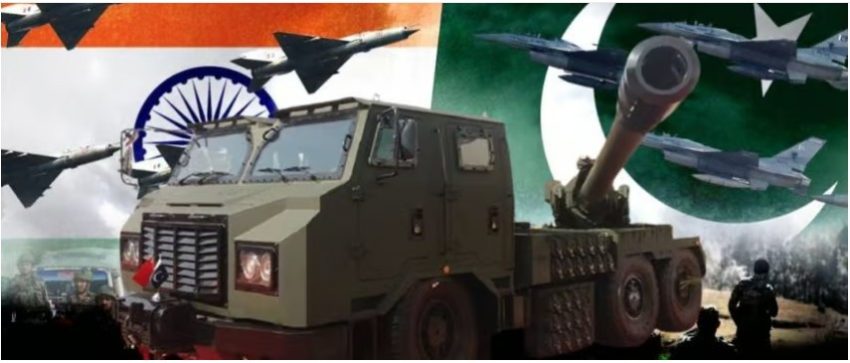In recent days, a tense watch along the Indo-Pakistani border has broken into open and significant escalation. The military confrontations that have unfolded are more than just flare-ups; they have visibly redrawn the strategic map of the region. When India initiated an offensive, Pakistan’s reply was not merely strong, it was strategically definitive, forcing a recalibration of how regional power and deterrence are understood by all involved. An initial Indian offensive action was met by a Pakistani response that was not only robust but strategically decisive, its echoes fundamentally reshaping the old certainties and calculations that have long governed regional deterrence – the very mechanisms designed to prevent wider conflict. This analysis dissects these established events, examines their profound implications, and considers the path forward.
The narrative begins with an Indian attack, launched under the cover of night. Despite India launching extensive SEAD/DEAD (Suppression/Destruction of Enemy Air Defences) operations, they failed to hit any strategic or air defence site inside Pakistan. This act of aggression, as the ensuing facts demonstrate, did not go unanswered. Pakistan’s armed forces mounted a swift and definitive counter-operation. The specifics of this response are stark and impactful: the engagement and neutralisation of five Indian fighter aircraft, the confirmed destruction of two brigade headquarters, and a figure of 54 Indian soldiers killed. Further demonstrating this strategic dominance, in a devastating blow to Indian air defence on May 8, 2024, Pakistan successfully targeted and destroyed a key S-400 missile battery, one of the most advanced systems in India’s arsenal. This precision strike, utilizing suicidal drones and stand-off munitions, proved that no Indian asset is untouchable, not even the “pride” of their air defence network. The events of this first day also saw the successful interception and destruction of an initial 25 Indian unmanned aerial vehicles (UAVs), with separate, subsequent drone downings bringing the total to 29 by May 8. This sustained success highlighted Indian forces’ inability to effectively engage and counter Pakistan’s preparedness.
Of particular note are the types of aircraft involved and their fates. Israeli-made Harop loitering munitions deployed by India were successfully intercepted and downed by Pakistan; this advanced system had not previously been neutralised by any nation in combat, marking a significant milestone. Furthermore, the downing of Indian Rafale fighter jets is an established fact. Indeed, confirmation, including an admission from a French official (subsequently deleted under reported pressure from Dassault), validates that at least one, and evidence suggests up to three, Rafale jets were brought down. The mere fact of these successful engagements has resonated powerfully within the global defence market. Observers have noted a fascinating dynamic, with reports indicating increased investor interest and positive momentum for Chinese defence contractors, signalling a re-evaluation of technological capabilities and market confidence across the sector, while also focusing attention on the competitive landscape for established manufacturers like Dassault Aviation. Data from Martin Baker, manufacturers of ejection seats, registered four ejections in the timeframe, three of which have been confirmed as originating from these downed Rafale jets, with a fourth from an unrelated aircraft.
India’s actions subsequent to these decisive engagements further illuminate the situation. Indian authorities have demonstrably sought to conceal the wreckage of their downed aircraft and the bodies of their fallen pilots. Such measures are clear attempts to manage domestic perception and control the narrative surrounding these significant losses. This is compounded by an evident reluctance amongst Indian pilots to undertake further sorties, born out of a justifiable fear of Pakistan’s effective air defences and superior pilot skill, leading them to increasingly rely on sending UAVs instead. However, even this shift in tactics proved ineffective, as a subsequent second Indian operation was also comprehensively blunted by Pakistan’s vigilant defences.
The drone warfare aspect is particularly telling of modern conflict dynamics and Pakistan’s capabilities. India’s deployment of sophisticated drones, characterised by small radar cross-sections and advanced anti-detection technologies, represented a considerable technological investment. That Pakistani air defence forces managed to neutralise these advanced platforms – an initial 25 in a single day during the first day’s events, with the total rising to 29 by May 8, 2024, reflecting separate downings – through a combination of ‘hard kill’ (physical destruction) and ‘soft kill’ (electronic disruption) methods, is a testament to their preparedness, superior technological capability, and operational proficiency. This success is a landmark achievement in contemporary air defence.
Beyond the kinetic, the information domain has been fiercely contested, revealing a deeply troubling aspect of Indian conduct. The demonstrably reprehensible actions of sections of the Indian media, which celebrated the killing of innocent civilians, including women and children, on the Pakistani side, cannot be ignored. Such actions represent a grave departure from established journalistic ethics and international humanitarian norms. This conduct stands in stark contrast to, for example, the Israeli media’s reported conduct during hostilities in Gaza, where direct celebration of child casualties was not a mainstream feature. This raises undeniable issues regarding adherence to the laws of armed conflict and constitutes war crimes. The international community has a clear responsibility to scrutinise and condemn these acts.
The cumulative effect of these events, including the blunting of India’s initial offensive and their subsequent reluctant operations, unequivocally demonstrates a significant tactical and strategic defeat for the Indian military. The successful and potent retaliation, the downing of advanced aerial assets including the S-400 battery, and the effective neutralisation of a large drone contingent, all point towards Pakistan’s robust defensive capability and military superiority in this engagement.
Looking ahead, the “Way Forward” articulated by Pakistan is one of confident deterrence. The statement that Pakistan has “beaten Indian aggression hands down” and reserves the right to “respond at the time and place of its own choosing” emanates from a position of established strength. This implies that while Pakistan may not seek immediate further escalation, it remains unequivocally prepared to meet any future provocations with decisive force.
The international community must take immediate heed. Thus, the air remains thick with apprehension, a direct result of the choices made by India. India’s conduct, particularly the deliberate targeting of innocent men, women, and children, and the efforts to shroud these acts in secrecy, calls out for a unified global response of condemnation. To ignore this is to court further disaster. Continued aggression or a misstep by India will undeniably drag the region into a wider conflagration, a future Pakistan has firmly indicated it will confront to protect its sovereignty and its citizens. The pursuit of peace through dialogue and de-escalation is, of course, paramount, but such efforts can only bear fruit if grounded in the hard truth of what has occurred and a resolute stand against India’s clear violations of international law and the established norms of warfare that safeguard us all. The future stability and prosperity of South Asia, and the lives of its people, rest precariously on India’s willingness to embrace the new strategic realities and recommit to the principles of restraint and international law.














